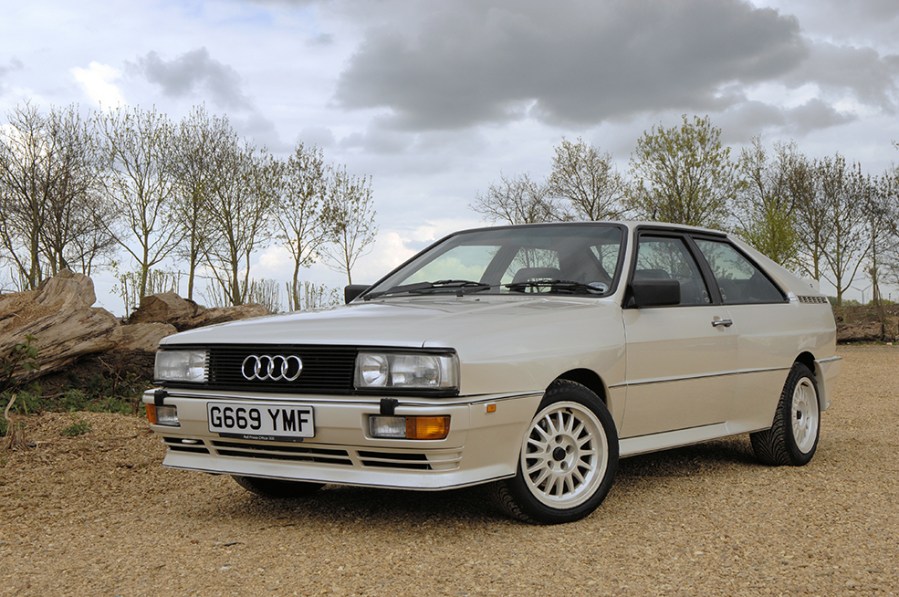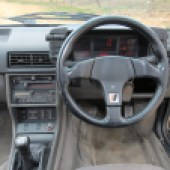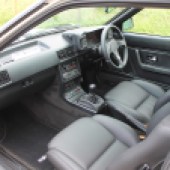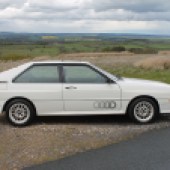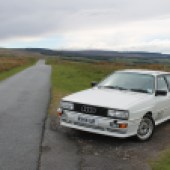The Audi Quattro put its maker on the map and is an appreciating asset these days. Here’s your definitive buyer’s guide
Read too many marque histories and you could come away with the idea that Audi’s Quattro was as significant to automotive technology as the wheel itself. It wasn’t of course, as witnessed by the fact that all-wheel drive cars remain in the minority, but it was a real game-changer back in its day. Especially of course on the rally stages which is where the car proved the worth of four-wheel drive in a performance application and took the Audi brand from a maker of rebadged Passats to a front-runner in the performance car game.
It was only the original turbocharged Quattro coupe (Ur-Quattro from the German ‘Ur’ meaning original) which received the capital Q in its name, the 4×4 option later extended across the range as a specification badged simply ‘quattro’.
By that point the Audi brand had become as synonymous with 4×4 as Subaru and so the original had done its job very well. It was replaced by the technically superior but somehow less charismatic S2 and today the Ur-Quattro is joining the ranks of the blue chip supercars at auction.
The Quattro owes a debt not to the Jensen FF as you might think, but to VW Group’s military vehicle, the Iltis. During cold-weather testing of the second-generation Audi 80 in the late ’70s, Audi development engineers noticed how the four-wheel drive Iltis was able to keep up with the more powerful front-drive Audis on icy roads and the idea of using all-wheel drive for on-road performance rather than off-road mud-plugging was born.
Championed by Audi’s legendary Ferdinand Piëch, a prototype was worked up using an Audi 80. At the time conventional four-wheel drive systems were bulky and heavy, using a separate transfer box to send power to the additional axle, often driven by chain. Only Subaru offered a neat road-biased solution with its boxer engine and front transaxle arrangement allowing drive to be taken rearward without a separate transfer box but Audi’s system was more elegant still.
Audi traditionally used a longitudinal front engine and front-wheel drive and to send drive back to the rear axle, a hollow transmission output shaft was employed. The outer shaft drove the rear wheels, with an inner shaft rotating inside it providing drive to the front axle. A centre differential integrated into the gearbox allowed the front and rear axles to turn at different speeds and the result was a system which was simpler and lighter than existing designs.
The firm had already been working on a coupe – essentially a two-door Audi 80 – and it was this body style which was chosen as the basis for the new car, with boxy flared arches the work of British stylist Martin Smith. The Quattro drivetrain was paired with an uprated version of the 200 5T turbo engine, now intercooled to produce 200 bhp.
The Quattro was unveiled in 1980 in 2144cc, 10-valve form and upgraded for 1988 to 2226cc, gaining a twin-cam 20-valve head and the option of catalytic converter for 1989 and it’s the engine codes which are often used in adverts to signify the different models: the original 2144cc 10-valve is the ‘WR’, the 2226cc 10-valve is the ‘MB’ and the 20-valve unit the ‘RR’.
Alongside the engine changes, the Quattro swapped its analogue dials for a digital dash for 1984 using green LCD, changed the following year to orange.
For 1985 the Quattro gained the restyled interior from the regular front-drive Audi Coupe, with new steering wheel, console and instrument panel including the rotary switches. At this point the wheels were enlarged from the 6×15 of the early cars to a chunky 8×15.
The suspension geometry was adjusted for 1984 with the rear anti-roll bar removed to reduce lift-off oversteer and was then lowered by 20mm and gained stiffer springs during the facelift. For 1988 the manually-operated centre differential lock was replaced by an automatic Torsen (torque-sensing) unit. Box-arches apart, the bodyshell followed the front-drive Coupe with the flat front and four lamps changed to single lamp units for 1983 and then a smoother, angled grille for 1985. The ‘RR’ cars also feature a modified floorpan to clear the optional catalytic converter.
One way to tell the three models apart is the badging: early ‘WR’ cars use stick-on decals for the ‘quattro’ emblem, whereas the ‘MB’ uses plastic chrome Audi lettering and logo and the ‘RR’ uses just the chrome plastic four rings logo.
The Quattro left production in March 1991, with the last cars overlapping the new Audi Coupe based on the B3 model which had been launched in 1986. its replacement would be effectively the 20-valve ‘RR’ engine and drivetrain installed in this car to create the Audi S2.
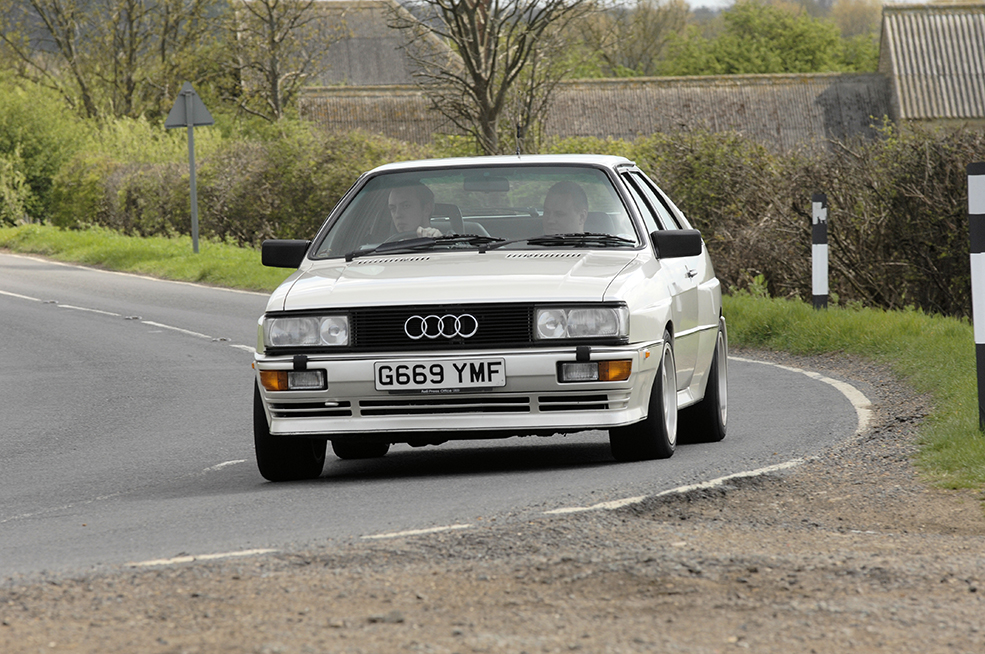
Bodywork
Audi proudly trumpeted the galvanised bodyshells offered across the range from 1985 but earlier cars often became pretty rotten before their values started to climb again so you’ll need to examine the usual areas – sills, doors and arches – to get a handle on its solidity. This applies to the later cars too, since galvanising doesn’t by itself prevent rust… nor can it prevent crash damage. Original build stickers inside the front end and bootlid area are good indications that it hasn’t been heavily shunted and Audis of this era always suffer badly if the rear end has been repaired – especially the seam around the rear panel and sealing of the light units.
Post-1987 cars use a plastic bootlid which won’t rot but requires specialist skills to repair if it’s damaged. Don’t be tempted by a restoration project unless your fabrication skills are up to scratch either: only fibreglass wings and bonnet are available so owners tend to repair damaged panels or fabricate new. Headlights and rear lamps are shared with the front-drive Coupe but are unavailable from Audi. Quattro Corner can supply new old stock and has had rear lights remanufactured.
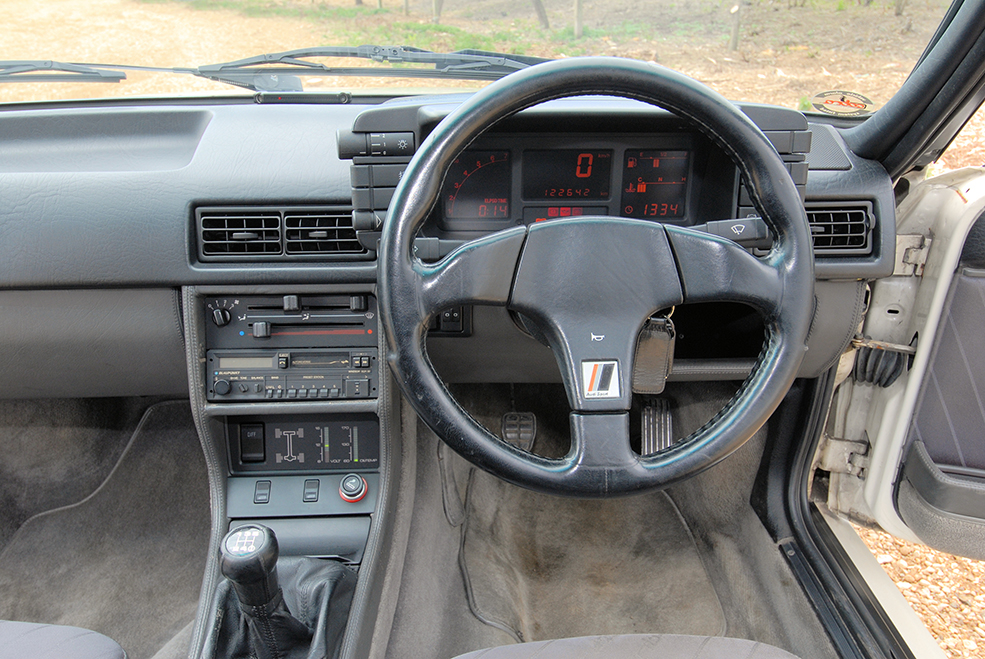
Engine and transmission
It’s been said that you need to look more closely at the underside of a Quattro than the rest of it and that’s not a bad suggestion. The rear diff seal can leak and if it runs low on oil it will be wrecked, while the pneumatically operated centre diff can also seize up through lack of use but is a DIY job to free off. If the light doesn’t come on when the button is used, then add it to the to-do list. During a test drive, drive the car in a low-speed figure-of-eight to listen for any bearing grumbles.
The gearbox action is slow and heavy by modern standards but if you’ve tried a few Quattros you’ll have a feel for how it should feel. If the synchro feels a little weak then most owners learn to live with it and employ judicious double-declutching rather than face the cost of a gearbox rebuild.
Despite its exotic nature at the time, the Audi five-cylinder is a reliable old lump even in turbo form, tending to get smokey and noisy in age rather than fail dramatically. It’s reckoned that the earlier ‘WR’ will need an overhaul after 150,000 miles with the ‘WR’ and ‘RR’ good for closer to 200,000 miles. Failed turbos will be obvious from the smoke due to oil getting past the seals, with the ‘MB’ being worse in this respect as its turbo lacks the water cooling of the later models.
The big issue under the bonnet is a cracked exhaust manifold, often caused by failure of the right-hand engine mount which takes more of the weight of the canted-over engine. This can in turn lead to a cracked exhaust manifold which is a common Quattro problem. The manifold is now available again from Audi Tradition but at a cost: £1100 plus VAT. There’s also a day’s worth of labour to dismantle the engine bay to access the manifold so it pays to listen out for the tell-tale clacking of a cracked manifold, usually near the turbocharger.
Not strictly an engine issue but worth checking anyway is a leaky fuel tank – it’s only obvious with a full tank but they can leak from the seam between the two halves of the moulding.
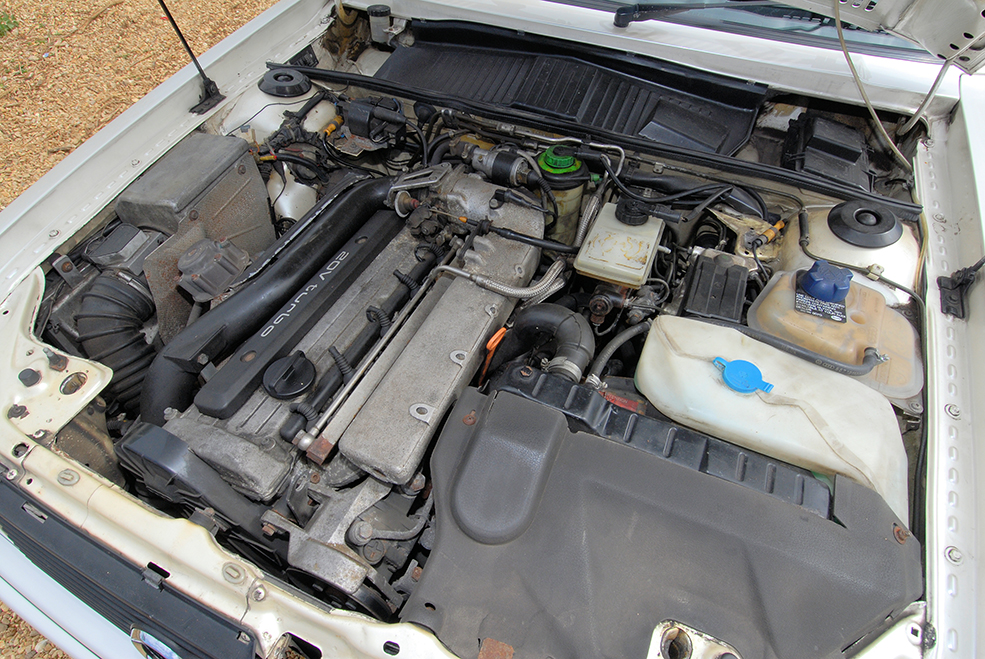
Steering, brakes and suspension
The Quattro uses a hydraulic accumulator rather than a conventional servo and this needs to be checked for safety. The check usually recommended is to unplug the low pressure warning switch, attach a voltmeter set to continuity across the connector and then depress the pedal several times – if the switch closes within fewer than six presses then it’ll need replacing.
Elsewhere it’s all conventional. Seized calipers are sorted by fitting exchange (pattern) replacements while a seized handbrake mechanism is generally also a DIY prospect to free off. ABS sensors are no longer available, so used parts are the only option when the system fails an MoT.
These are heavy cars and age will take its toll on the suspension bushes, with the wishbones being common as well as front and rear subframes. Later cars have also been known to show cracks in the subframes at the rear.
Interior, trim and parts
The later the car, the more plush the interior, with part leather standard for the UK from 1989 but most earlier cars featuring cloth. Audi is surprisingly poor at supporting its older cars with detail parts which is why you’ll often find cars either retrimmed in non-standard leather or fitted with seats from the regular Coupe which are a bolt-in replacement. Audi simply can’t supply any trim and electric window motors are unavailable too.
Like so many ’80s cars, it’s the parts supply – or lack of it – which makes Quattro ownership so tricky. Despite Audi operating its Audi Tradition division, its parts support for the Quattro is pretty sketchy.
If you own one of these then it’s likely you’ll soon be on first-name terms with Pete Reeve at Quattro Corner in Birmingham who can supply everything you’ll need to keep one of these cars on the road and has even had parts like rear lights remanufactured.
Pete points out that crucial non-available parts include wings, bonnets, electric window motors and ABS sensors. As he points out, you do need to budget accordingly if you plan to own and use a Quattro as a crash repair for example will involve painstaking craftsmanship rather than a simple panel replacement.

Audi Quattro: our verdict
The days when you could pick up an Audi Quattro for under ten grand are long gone, thanks to Life On Mars and a general appreciation of everything 80s. We reckon it’s still well worth the outlay, however – there are few cars this side of a Subaru Impreza that combine such a charismatic engine with four-wheel-drive ability and head-turning looks. A Quattro is pretty practical too, at least as far as 80s performance cars are concerned – and if the weather gets rough, you know your rally-bred special will be more than up to the task.
If you get a project, make sure you know what you’re getting into as fabrication skills will be required for sure – otherwise, there’s not much to complain about.
Audi Quattro timeline
1980
Audi Quattro released in Europe in 10-valve, 2.1-litre ‘WR’ form
Audi Quattro makes competition debut in Austria
1981
Michèle Mouton wins the Rallye Sanremo in her Quattro and becomes the first female to win a world championship rally event
1983
Iconic green LCD dashboard added
Combined headlights added
1984
Interior redesigned with new dash layout and steering wheel
Audi Sport Quattro arrives to homologate new shorter-wheelbase rally car
1985
Another slight interior change brings harder dashboard foam and some switchgear changes
Sloping front grille, headlights and trim changes arrive as part of facelift
Audi Sport Quattro S1 E2 arrives as the ultimate iteration of Audi’s all-conquering rally car.
1987
Walter Röhrl takes victory at Pikes Peak in a specially prepared Sport Quattro S1 E2
1988
Engine upgraded to 2226c, referred to today as the MB in reference to its engine code.
1989
Catalytic converter option added along with twin-cam 20V head, known now by its RR engine code
1991
Production ends with 11,452 examples produced

